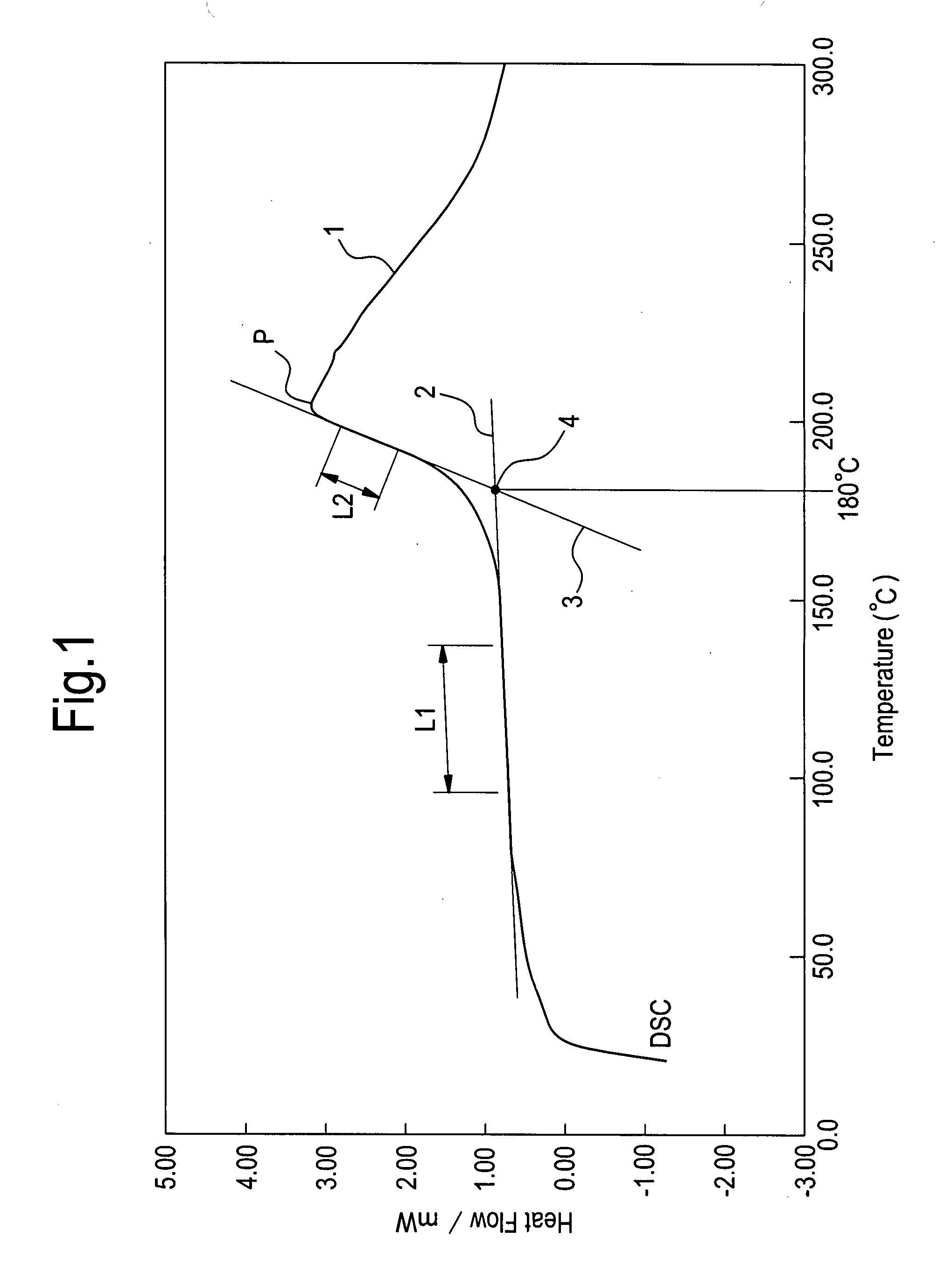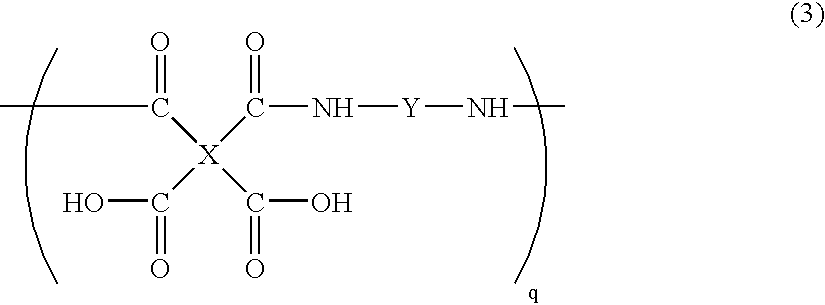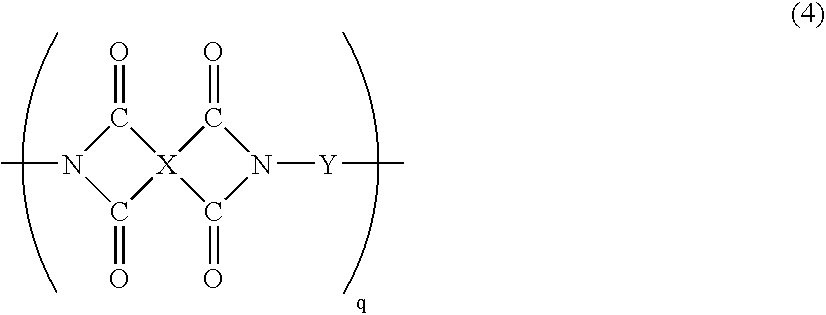Adhesive composition, adhesive film, and method of producing semiconductor device
a technology of adhesive film and adhesive composition, which is applied in the direction of film/foil adhesives, transportation and packaging, synthetic resin layered products, etc., can solve the problems of reducing the service life of the device, the packaging (pkg) of the device suffers from inferior moisture resistance, heat resistance, thermal stress relaxation, etc., and achieves low elastic modulus, high heat resistance, and strong adhesive strength
- Summary
- Abstract
- Description
- Claims
- Application Information
AI Technical Summary
Benefits of technology
Problems solved by technology
Method used
Image
Examples
synthesis example 1
Synthesis of Polyimide Resin
[0078]A 1 liter separable flask equipped with a 25 ml quantitative moisture receiver that is fitted with a stopcock and also connected to a reflux condenser, a thermometer, and a stirrer was charged with 44.03 parts by mass of a diaminosiloxane KF-8010 (manufactured by Shin-Etsu Chemical Co., Ltd.) represented by the structural formula shown below, and 100 parts by mass of 2-methylpyrrolidone as the reaction solvent. The mixture was stirred at 80° C., thereby dispersing the diamine. A solution containing 38.72 parts by mass of 6FDA (2,2-bis(3,4-dicarboxyphenyl)hexafluoropropane dianhydride) as the acid anhydride, and 100 parts by mass of 2-methylpyrrolidone was then added dropwise to the dispersion, and the reaction was continued under constant stirring for 2 hours at room temperature, thereby synthesizing an acid anhydride-rich amic acid oligomer.
(wherein, n=10 (average value))
[0079]Subsequently, a 1 liter separable flask equipped with a 25 ml quantitati...
examples 1 to 5
, Reference Examples 1 to 2
[0081]50 parts by mass of the polyimide resin obtained in the synthesis example 1 was dissolved in 50 parts by mass of cyclohexanone, thus forming a solution. This solution was combined with an epoxy resin RE310S (manufactured by Nippon Kayaku Co., Ltd.), dicyandiamide (DICY) (manufactured by Shikoku Chemicals Corporation) as a curing catalyst, and a 70% by mass cyclohexanone solution of silica (product name: SE2050, manufactured by Admatechs Co., Ltd.) as an inorganic filler, using the blend quantities (parts by mass) shown below in Table 1, thus yielding an adhesive composition. The properties of each of the prepared adhesive compositions were measured using the methods described below. The results of these measurements are shown in Table 1.
(1) Adhesive Composition Properties
[0082]15 μm Gap Filling Performance
[0083]Each of the resin compositions from the examples 1 to 5 and the reference examples 1 and 2 was used to form an adhesive layer (thickness: 25 ...
PUM
| Property | Measurement | Unit |
|---|---|---|
| Temperature | aaaaa | aaaaa |
| Temperature | aaaaa | aaaaa |
| Temperature | aaaaa | aaaaa |
Abstract
Description
Claims
Application Information
 Login to View More
Login to View More - R&D
- Intellectual Property
- Life Sciences
- Materials
- Tech Scout
- Unparalleled Data Quality
- Higher Quality Content
- 60% Fewer Hallucinations
Browse by: Latest US Patents, China's latest patents, Technical Efficacy Thesaurus, Application Domain, Technology Topic, Popular Technical Reports.
© 2025 PatSnap. All rights reserved.Legal|Privacy policy|Modern Slavery Act Transparency Statement|Sitemap|About US| Contact US: help@patsnap.com



